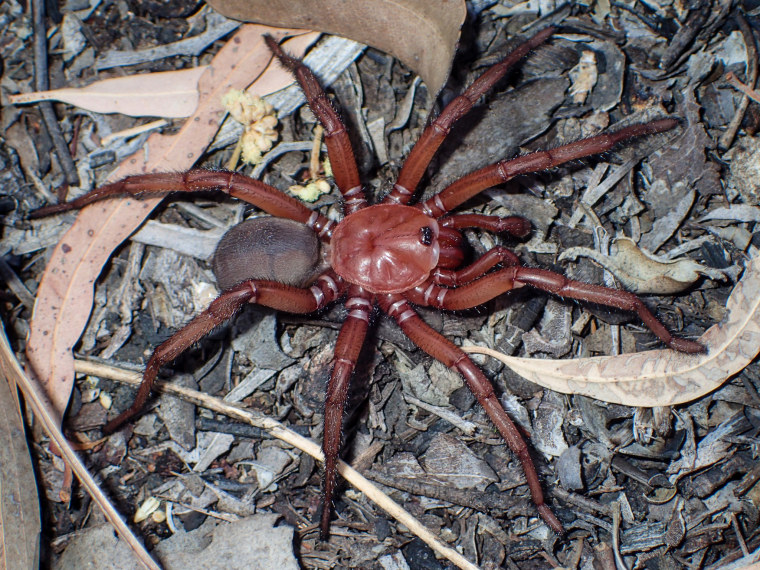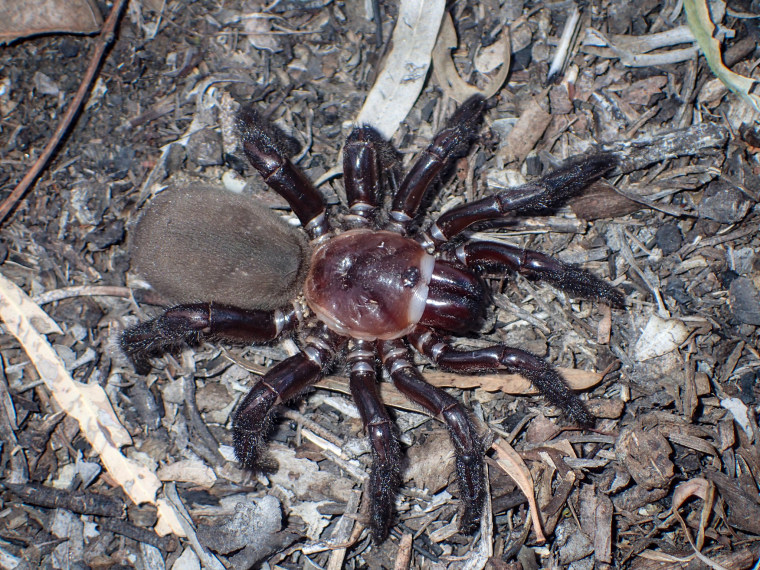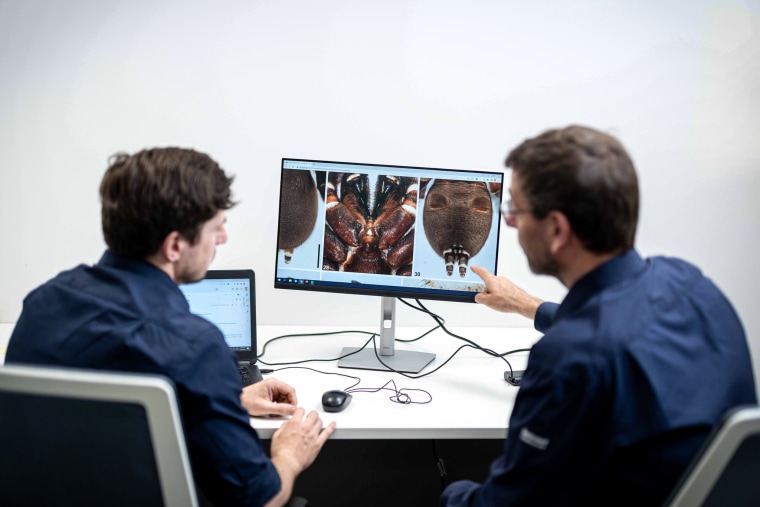Researchers in Australia have made a big discovery: a super-size species of trapdoor spider found only in Central Queensland.
The arachnid has been dubbed Euoplos dignitas — a name "derived from the Latin "dignitas," meaning "dignity" or "greatness" — “reflecting the impressive size and nature of the spider,” scientists with the Queensland Museum said in a statement.

The spider lives in open woodland habitats and builds its burrows in the black soils of the Brigalow Belt in Central Queensland, which is on the northeastern coast of Australia.
The species has lost much of its habitat to land clearing, which most likely makes it an endangered species, the scientists said.
While the Australian team did not detail how big their find is, trapdoor spiders are typically up to 1.5 inches long and nest underground, according to National Geographic. They are hairy tropical spiders, and their bites can cause pain and swelling in humans.
According to Britannica, the spiders construct burrows in the ground and build silken-hinged doors. The spiders then feed by quickly opening the trap doors and grabbing unsuspecting insects that pass by.
In a video posted to announce the Australian discovery of the giant creepy crawler, Michael Rix, the principal curator of arachnology with the Queensland Museum Network, said the experts were excited to “scientifically document this new species.”

Jeremy Wilson, a research assistant in arachnology with the Queensland Museum Network, said in the video that the research is exciting because “you just never know what you’re going to find.”
Wilson said naming the new species has real-life positive ramifications, because being a known species means “it can be protected.”
